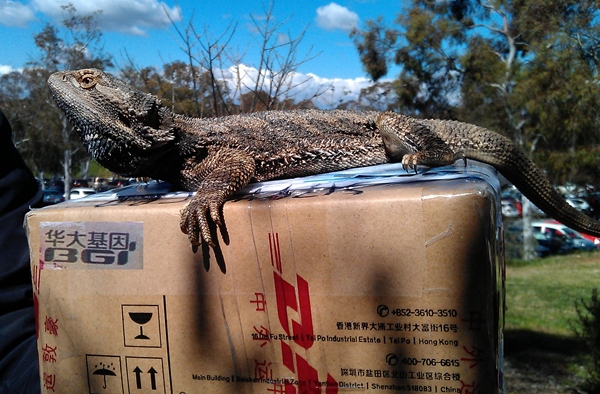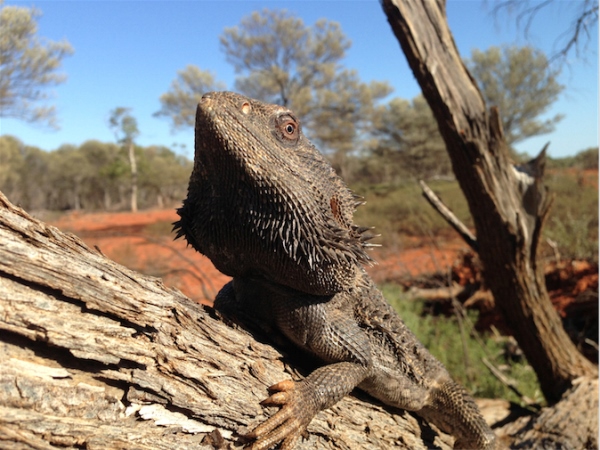Marcus Butler
4 October 2015: The genetic code of the central bearded dragon has been published for the first time by a team of University of Canberra researchers, while on their quest to find an elusive sex-determining gene in reptiles.
Distinguished professor Arthur Georges and colleagues from the University's Institute for Applied Ecology (IAE) laid bare the genetic code of 'Fabian', the dragon who has become the poster child for his species, Pogona vitticeps, in the journal GigaScience, a peer-reviewed journal focused on life and biomedical sciences.
Professor Georges and his team, who have been working on this project in collaboration with the Beijing Genome Institute (BGI) in Shenzhen, China, are working to identify the master sex-determination gene, which has yet to be discovered in any reptile species.
"We have been working on the Pogona vitticeps genome sequence for about four years. We have been keen to obtain a genome sequence for the dragon from the time we began investigating the genetics of sex determination in this species," Professor Georges said.
"Having this dragon's genome is of enormous value in accelerating our work. When we discover the sex-specific fragment of sequence we are looking for, we can map it to our genome sequence and see which genes are in that region of the code."
The dragon genome is made up of 1.8 billion base pairs, which is just over half the size of the human genome which has three billion base pairs.
"Almost all of the genes in humans can be found in the dragon, which isn't that surprising, as we do share 85 per cent of our genes with zebrafish, for example, and about 30 per cent with a carrot," he explained.
He describes the challenge of decoding Fabian's genetics like re-building a novel that has been cut into small sections.
"Each section is about 150 characters long and some sections overlap. To re-assemble the novel you have to match up the overlapping segments and the story starts to take shape.
"Just to make things really difficult, you have two copies of the novel, one from Fabian's mum and one from dad and unfortunately, in the dragon, those copies are quite different from each other. It complicates the assembly and makes for quite a challenge," he said.
"Fabian still lives happily in our reptile facility at IAE after providing his DNA to the BGI labs in Shenzhen. Using their astonishing array of DNA sequencers they supplied the code in the raw 150 base pair fragments for us to work with, and did much of the assembly," Professor Georges said. "Our role has included mapping the sequence to the dragon chromosomes, which is work still underway."
The University of Canberra research team working on the project include Dr Denis O'Meally, Dr Janine Deakin, Dr Clare Holleley, Dr Xiuwen Zhang, Dr Jennifer Graves and Dr Stephen Sarre.
Professor Georges added that the genome will be very useful for other researchers nationally and internationally, and enquiries are already flowing in about the project and on how to gain access to the genome.




